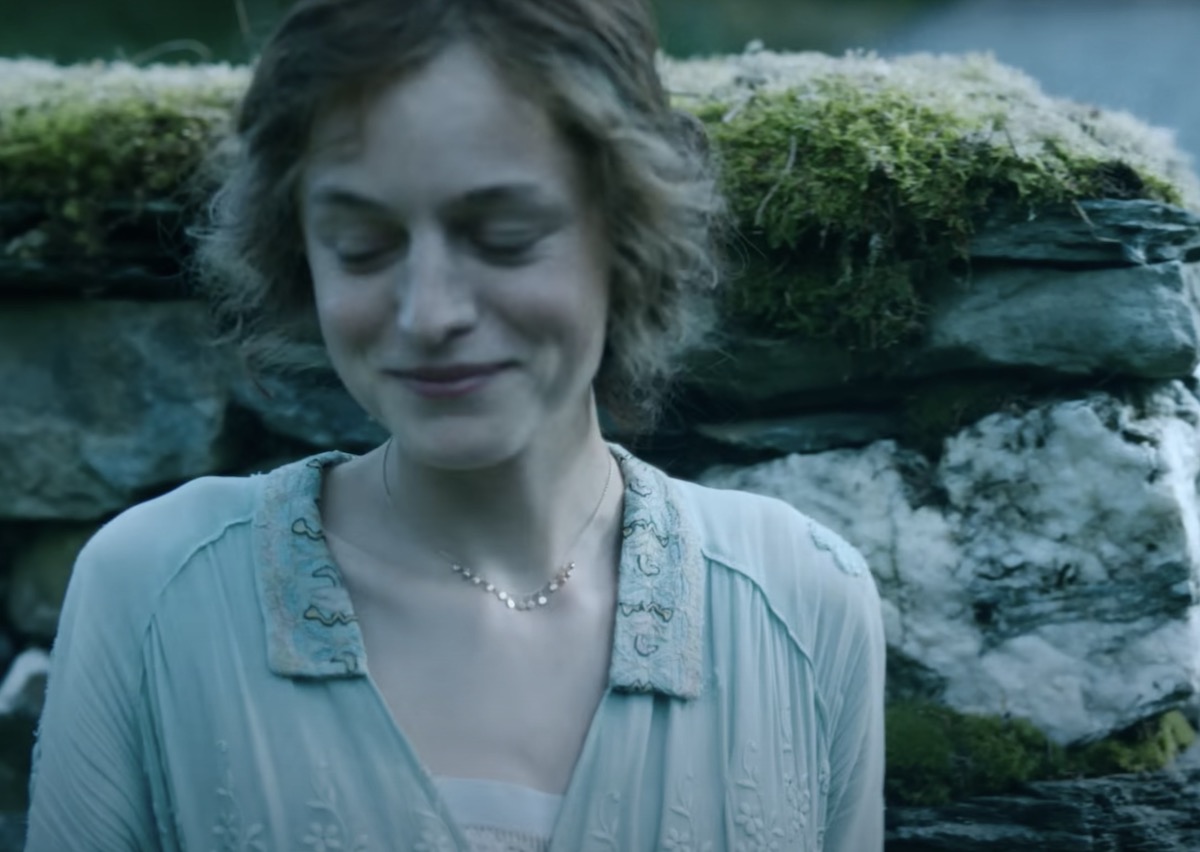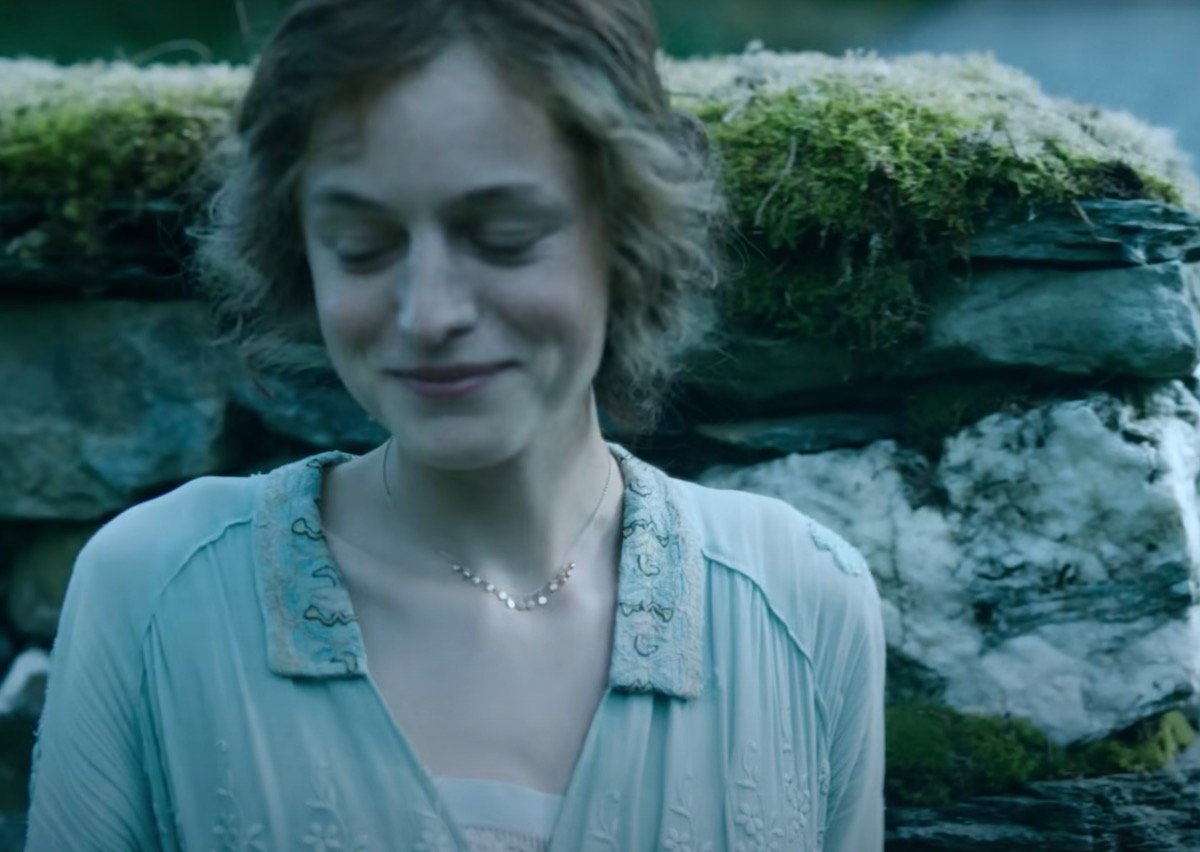‘Lady Chatterley’s Lover’ Costume Designers Snuck in These … – Showbiz Cheat Sheet

Netflix’s Lady Chatterley’s Lover is largely about people taking their clothes off. It is a bit ironic, then, to consider the incredible importance of those clothes in the film’s character-building and period establishment.
However, even in disrobing (or in this case, especially when disrobing), the costumes in Lady Chatterley’s Lover tell a story all their own. With this in mind, the Netflix movie’s costume designer, Emma Fryer, sought to convey the timelessness of the story by using modern fashion Easter eggs.
‘Lady Chatterley’s Lover’ is based on the book written by D. H. Lawrence
Written by D. H. Lawrence in 1928, Lady Chatterley’s Lover was banned when it was first published. Addressing themes considered highly taboo at the time, Lawrence’s novel not only breached the subject of a woman’s sexual pleasure but had that pleasure sourced from a class far below her own.
Lady Chatterley’s Lover follows Constance “Connie” Reid (played by Emma Corrin of The Crown) as she marries Sir Clifford Chatterley. After Clifford returns from war paralyzed, the pair move to the countryside to reside at his estate, Wragby Hall, where Connie’s life — previously as a busy London socialite — becomes consumed by loneliness. She is a caretaker to her husband but little else, with no dreams or life of her own.
Connie then meets the estate’s gamekeeper, Oliver Mellors (Jack O’Connell), and the pair embark on a journey that awakens Connie in every way. Theirs is not only a sexual connection but also an emotional and psychological one. Yet their relationship breaks society’s rules, and Connie must decide if she will lose everything worldly to win all spiritually.
Connie’s conflict was common throughout Lawrence’s writing, with the author penning several stories addressing the idea of whole-being satisfaction and stimulation (mind, body, and spirit). While Netflix’s Lady Chatterley’s Lover movie remains largely true to Lawrence’s themes, one notable difference between the stories is the ending.
While the film serves up a happy ending for Connie and Oliver, Lady Chatterley’s Lover the book ended far more ambiguously (a change that sacrifices much of the potency associated with Connie’s huge risk at the time of Lawrence’s writing).
Costume designers for ‘Lady Chatterley’s Lover’ made movie magic by breaking rules
Set in post-war England, Lady Chatterley’s Lover is a period piece that takes place around 1920. At that time, women’s fashions featured the drapey styles that had become popular before the war, but also the sense of utilitarianism that women had gained during the period.
When making Lady Chatterley’s Lover the movie, Fryer came to the project wanting to achieve a sense of timelessness through historical, yet modern, designs. She did this by utilizing contemporary clothing as fashion Easter Eggs throughout the film.
“It’s almost like you are watching a painting,” Fryer says in a Netflix interview (via YouTube). “There is a sort of French arthouse feel to this movie…[and] I felt I could pull in some actual modern clothing.”

Speaking to Women’s Wear Daily, Fryer reveals that some of the dresses seen on Corrin in the film were found while browsing at Selfridges and are by labels like Zimmerman, Needle & Thread, Vilshenko, and Galanthya. This means that anyone wanting to play Lady Chatterley for the day is only a few clicks away from being able to dress the part.
‘Lady Chatterley’s Lover’ movie reviews
Certified “fresh” on Rotten Tomatoes, Netflix’s Lady Chatterley’s Lover has gotten excellent reviews from critics and viewers alike. The movie has an 87% Tomatometer rating, with top critics like Shirley Li saying she was “entranced” by Lady Chatterley’s Lover and its sex scenes that “look like works of art” (The Atlantic).
Viewers seem similarly taken with the film, with most whole-heartedly agreeing with Fletcher Peters from The Daily Beast who says, “Ban it now, before I watch it 40 times over.”
Copyright :

